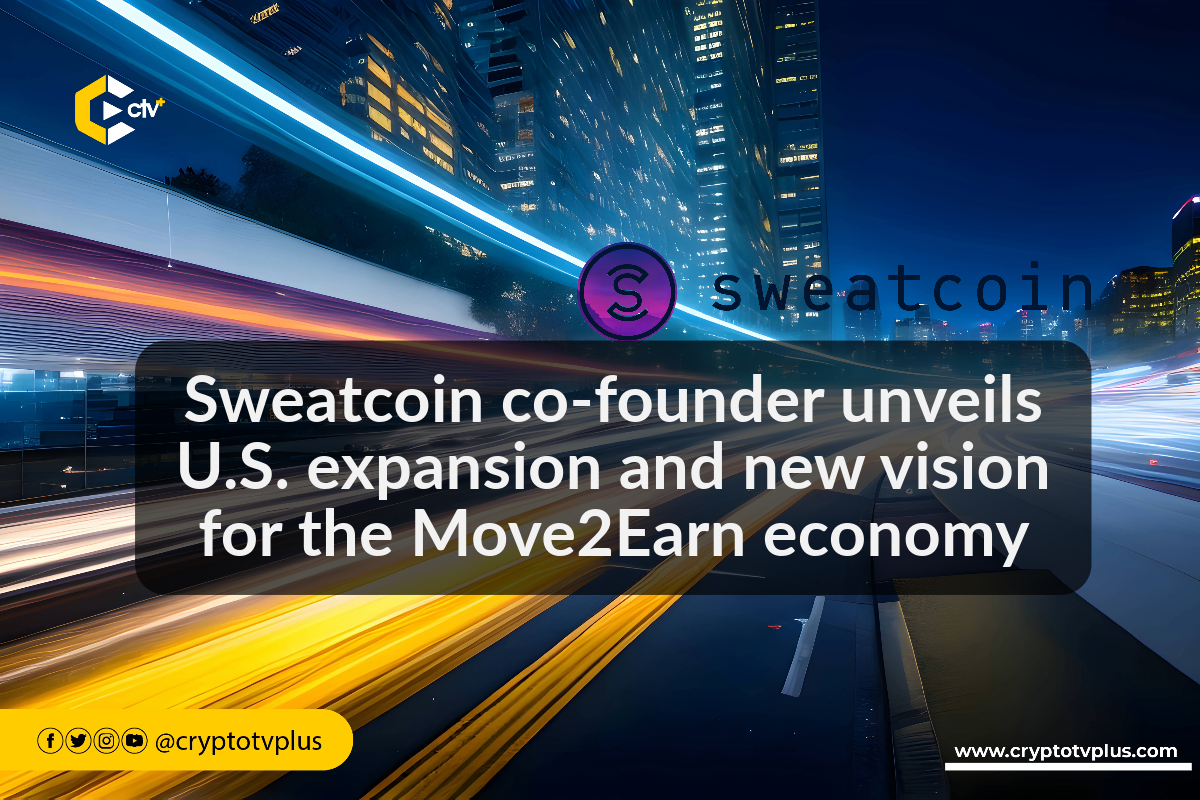News
Sweatcoin co-founder unveils U.S. expansion & new vision for the Move2Earn economy

In the recent Permissionless event, Oleg Fomenko, co-founder of Sweatcoin, unveiled the company’s ambitious plans for the future, including expanding into the US and how the Move2Earn economy has evolved.
Speaking on the first anniversary of Sweatcoin, the co-founder shared insights into the journey of Sweatcoin and the company’s vision for a more physically active world.
Sweatcoin, founded in 2014, gained recognition for its unique approach to promoting physical activity. Unlike traditional fitness apps that merely track your steps, Sweatcoin incentivizes users to be more active by rewarding them with a digital currency called Sweatcoins.
The premise is simple: the more you move, the more Sweatcoins you earn.
Sweatcoin’s token, already among the top in terms of active users, is poised for expansion into the U.S. market. The company has made its wallet available, with token distribution scheduled for October 17th, opening new opportunities for users to engage with the “Sweat Economy.”
Oleg said that the primary goal of Sweatcoin was never to create just another fitness app but to make the world more physically active.
Over the years, Sweatcoin has demonstrated the viability of its model as it incentivized users to take more steps and lead healthier lives.
Tokenizing physical activity and the Move2Earn economy
The Sweatcoin official also went on to say that one of the key differentiators of Sweatcoin in the blockchain industry is their approach to tokenization.
Unlike many other projects that focus on utility tokens, Sweatcoin aims to tokenize physical activity as an asset.
He argued that physical activity itself holds intrinsic value, and by tokenizing it, they’ve tapped into an entirely different market.
In responding to the concerns about the essence of the Move2Earn market, the speaker shared statistics indicating that the entire industry around incentivizing physical activity was thriving, despite some specific projects facing setbacks.
He drew parallels between Sweatcoin’s current state and the internet’s early days in 1996. He pointed out that the number of users in the Web3 space is equivalent to the user base of the internet in its nascent stage.
The comparison reveals the potential for growth in the blockchain and cryptocurrency space.
However, he pointed out that the three major impediments of the Move2Earn economy are: the abundance of questionable projects, a confusing definition of success, and the absence of a mass-market use case.
He noted that the prevalence of fraudulent or inept projects had tarnished the industry’s reputation, especially in the eyes of mainstream consumers. He emphasized the need for self-regulation and responsible behavior.
“When Gary Gensler says that there are a lot of crooks in this industry, let’s acknowledge the fact that he’s right. There is way too much of this, and we are ruining the reputation of the industry, especially in the eyes of mass-market consumers.”
For the use cases, he said that mass adoption will not happen properly until there are user-driven use cases in Web3. And beyond having these use cases, the user experience in Web3 needs to be redefined to suit the users and not the industry.
“Always focus on the problem. Don’t start with an idea,” he said. “Don’t grab something from TradFi and try to put it into Web3; talk to users.”
A call for innovation and mass-market use cases
Furthermore, he criticized the focus on certain metrics like TVL (Total Value Locked) and urged the industry to shift its focus to active users, a metric that had driven the success of internet giants like Facebook and Google.
The co-founder talked about the lack of innovation in the blockchain space, citing the proliferation of projects catering to existing crypto enthusiasts and whales.
He challenged the industry to innovate around mass-market use cases, similar to how email revolutionized the early internet.
Read also; How the Sweatcoin economy works













2 Comments